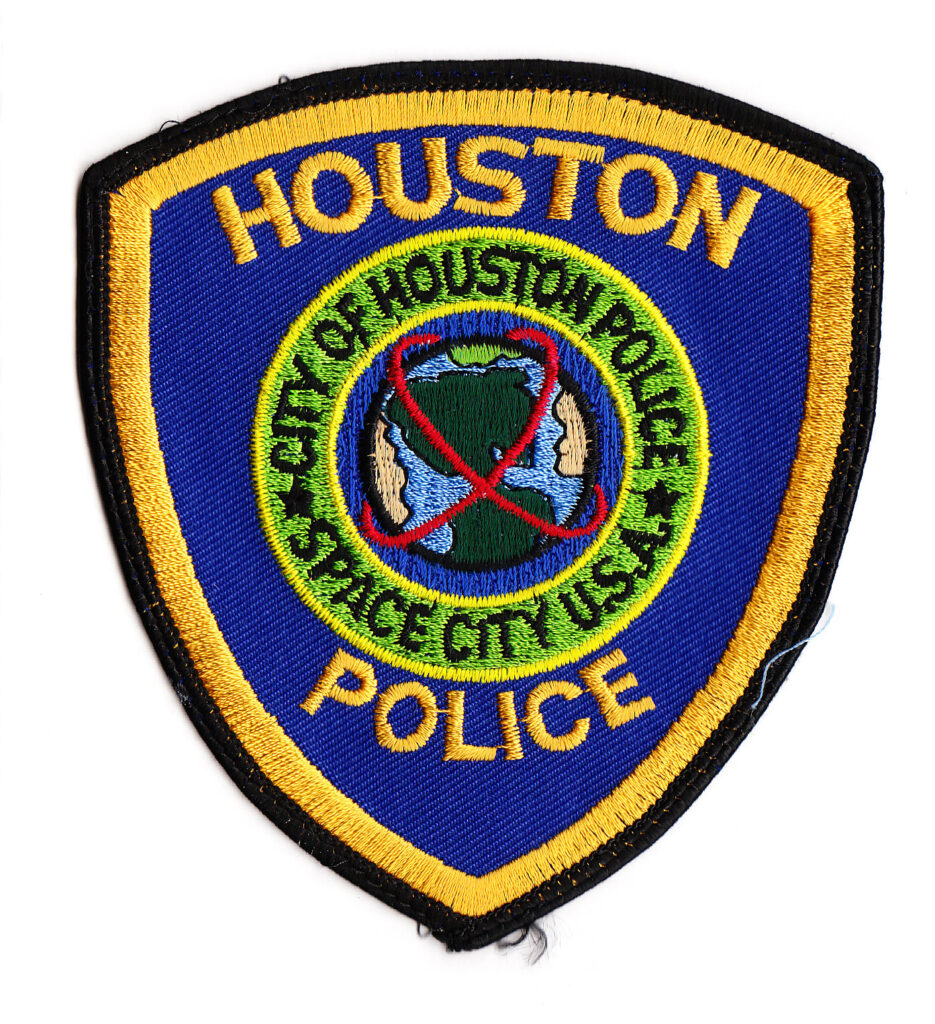History of the Houston Police Shoulder Patch
This patch was designed in 1964, when Houston and the world were poised to enter the new frontier of space exploration. As is reflected on the patch, Houston became known as “Space City, U.S.A.” Houston today is an exciting international city with a growing and vibrant population.
The History of the Houston Police Department Motorcycle Unit
Submitted by Daniel S. Perales
Assistant Chief, Houston Police
Department, North Patrol Command
From the Harley-Davidson “The Motor Officer” Fall 2013
Katrina…Rita…Ike. Within the space of three years, these three deadly hurricanes slammed into the Gulf Coast, leaving mass devastation in their wake. High winds, flooded streets, rain-choked bayous, downed power lines and tens of thousands of evacuating residents threated the physical and civil infrastructure of the area. But for the motorcycle officers of the Houston Police Department, dealing with these conditions was an expected part of their duties, and they successfully helped bring order to the potential chaos. Dealing with the onslaught and aftermath of hurricanes is just one of the many challenges motorcycle officers encounter, along with patrolling the 575.5 miles of freeway system in the Houston metropolitan area, investigating crash sites, conducting traffic enforcement, and escorting everything from radioactive nuclear reactor cores, the contents of the Federal Reserve, funeral processions, and multi-million-dollar energy equipment, not to mention local, state and national dignitaries.
The “SOLO DETAIL”
Since its establishment in 1909, the Houston Police Department Motorcycle Detail, better known as the “Solo Detail,” has been a vital presence on the streets of Houston. Houston is the fourth largest city in the United States and the largest city in the state of Texas. According to the 2010 U.S. Census, the city had a population of 2.1. Million people within an area of 656.3 Square miles. At any given time throughout the workday, there are close to 4 million people within the city limits.
Under the leadership of Chief of Police Charles A. McClelland Jr., the Solo Detail has 40 riding officers, four riding sergeants and a lieutenant, The Solos Detail officers are responsible for purchasing, maintaining and insuring their own police motorcycle, although the City provides a monthly stipend to the officers to assist with costs. The officers ride the Harley-Davidson Road King motorcycle. In an average year on the Road King, the Solo Officer will travel approximately 50,000 to 60,000 miles. Some officers assigned to the detail travel up 95,000 miles a year. These miles have been ridden in some of the hottest summers and the coldest winters on record for Houston. The officers if the Solo Detail also work off-duty to escort funeral processions and oversized load movements throughout the city.
IN 2005, the detail was assigned to the Mobility Incident Management Division, which was created in recognition of the fact that mobility is a significant public safety and quality of life issue. In 2008, the detail was reassigned to the Traffic Enforcement Division. There, the tasks and responsibilities increased. The Solo Detail now has complete responsibility for all freeway system in the city, and is the primary detail for conducting freeway crash investigations. Since January 2010, the Solo Detail has written 174,073 traffic violations for an average of 58,000 citations a year, responded to 2,551 freeway accidents for an average of 850 accidents a year, and answered 53,647 calls for service for an average of 17,822 a year. The Solo Detail has been able to accomplish this while still conducting On-Duty funeral escorts, Dignitary Motorcades, and facilitating the movement of traffic during major freeway incidents.
THE HURRICANE YEARS
The Solo Detail is also called upon for special projects as well, such as the hurricane response previously mentioned. Hurricane Katrina was one of the deadliest hurricanes ever to hit the United States. An estimated 1,836 people died in the hurricane and the flooding that followed in late August 2005, and millions of others were left homeless along the Gulf Coast and in New Orleans, which experienced the highest death toll. In the wake of hurricane Katrina, thousands of people fled Louisiana and Mississippi and traveled to Houston to seek refuge. The City of Houston was overwhelmed with thousands of evacuees, and its population grew by 50,000 seemingly overnight. The Solo Detail escorted bus load after bus load of evacuees from Louisiana to the Astrodome for shelter. They escorted the ice and food vehicles to several locations throughout the city. The Solo Detail also was called on during this crisis to respond to crowd control and security at the FEMA centers that were distributing funds.
Little did the Solo Officers or HPD Command Staff realize that Katrina was the precursor to Hurricane Rita. Hurricane Rita was the fourth-most intense Atlantic hurricane ever recorded and the most intense tropical cyclone ever observed in the Gulf of Mexico. Rita paid Houston a visit, and the Solo Detail was again called into action. Texas motorists were stranded on interstate highways during the Hurricane Rita evacuation. Texas Governor Rick Perry recalled all emergency personnel, including almost 1,200 Texas National Guard and 1,100 Texas State Guard members from Katrina recovery efforts, and several hundred Texas Game Wardens in anticipation of Hurricane Rita’s arrival. On September 22, Governor Perry and the Texas Department of Transportation implemented a contraflow lane reversal on Interstate 45 north toward Dallas, on Interstate 10 west toward San Antonio, and on U.S. Highway 290 northwest to Austin.
The over 6 million people in the region feared the same that they had just witnessed from Katrina. Millions of people fled southeast Texas and the city of Houston within two days. The city freeway systems were gridlocked, and the only units able to travel in the city were the Solo Officers. These officers witnessed and lived through unimaginable tragedy and mass chaos. Vehicles were sitting on the freeway system for eight hours and moved less then a mile. People and animals died during the ordeal, and urine and feces covered the freeways. Thousands were without fuel, water and food. The Solo Officers moved throughout the city and responded to incidents on the freeways, scouted ahead hundreds of miles to facilitate the movement of traffic, escorted gas trucks that were in danger of being highjacked, and attempted to maintain order.
Three years later in 2008, Hurricane Ike arrived. At the time, hurricane Ike was the costliest hurricane ever to make landfall in the United States, and the costliest hurricane in Texas history. On September 10, President George W. Bush made an emergency declaration for Texas in advance of Hurricane Ike, making more federal help available for preparations and evacuations. On September 11, at 8:19pm, the National Weather Service in Houston/Galveston issued a strongly worded bulletin regarding storm surge along the shoreline of Galveston Bay. The bulletin advised that residents living in single-family homes in some parts of coastal Texas faced “certain death” if they did not heed orders to evacuate. The city of Houston took a big hit from Ike; windows also broke in downtown buildings such as the 75-story JP Morgan Chase Tower, and Reliant Stadium was damaged. Also as a result of the high wind eye wall that passed directly through the city, power outages were a major problem, as some residents were without electricity for over a month after landfall. Some parts of Houston were not expected to have power until November 1. Once again, the Solo Detail was called into action. The Detail’s days off were cancelled and the officers went to 12-hour shifts. The evacuation of the city went smoother then before. This time a lot of citizens decided to ride the storm out. The Solo Detail facilitated the evacuation and then pulled the motorcycles into the Police Union Hall in downtown Houston prior to landfall. After the storm wind subsided the Solo officers hit the street. The City of Houston looked as if a bomb had gone off. The city streets were blocked with tree debris, downed power lines and flooding. Needless to say, it was a little tricky to travers the streets on motorcycles. Ike left 2.15 million people without electricity and destroyed over 1,000 power poles and transformers. Solo Officers escorted vehicles with the necessary poles and transformers throughout a 10-county area traveling 300 to 800 miles per day and working 12-18 hours shifts to expedite returning power to Houston citizens. As the Solo Officers rode into the neighborhoods of Houston with these poles the citizens would walk out to the streets cheering and giving them a big thumbs up. With the help of the Solo Detail, CenterPoint Energy was able to expedite the restoration of power to the citizens of Houston.
In addition to hurricane readiness and response and all of the daily duties of a law enforcement officer, the officers of the Solo Detail have escorted kings and queens, presidents from around the world, heads of state, fallen soldiers and professional athletes.
ENTERING THE SOLO DETAIL
When an opening occurs on the Detail, interested officers must submit an application and meet certain conditions, including a valid Texas Class M license, an excellent work and attendance history with a minimum of two years’ experience as an officer, and a willingness to work flexible hours and shifts inclement weather and any major or catastrophic event. An applicant must also pass a riding evaluation to demonstrate the ability to operate a motorcycle over a course designed to evaluate basic motorcycle riding skills.
According to Assistant Chief Dan Perales of the Houston Police Department, training is a primary goal of the detail due to the hazardous nature of the assignment. The officers must meet the standard set forth by the Northwestern University Center of Public Safety’s International Police Motorcycle Academy, focusing on handling the motorcycle at slow speeds, evasive maneuvers and braking techniques.
Assistant Chief Perales stated, “the Houston Police Department extended the unit’s Basic Motorcycle class from 40 hours of training to an 80-hour course for any officer who desires to become a motor officer. An officer assigned to the detail is required to complete a 3-month Field Training Program. Once assigned, the training continues and officers are required to participate in a 16-hour annual recertification in addition to 4-hour monthly training.”
Working as a motorcycle officer in the fourth largest city in the United States demands professionalism, readiness and initiative. The Solo Detail officer excels in all these areas, and the Houston Police Department in proud to have these officers in service to the citizens of Houston.
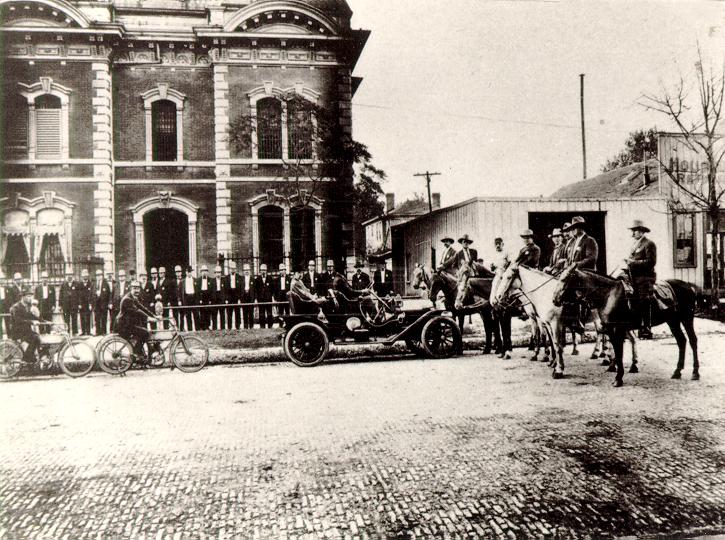
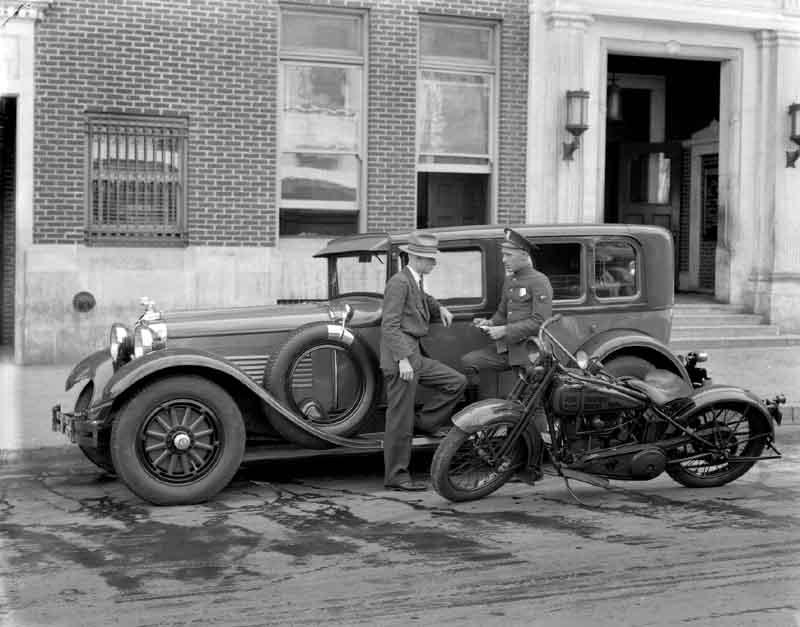
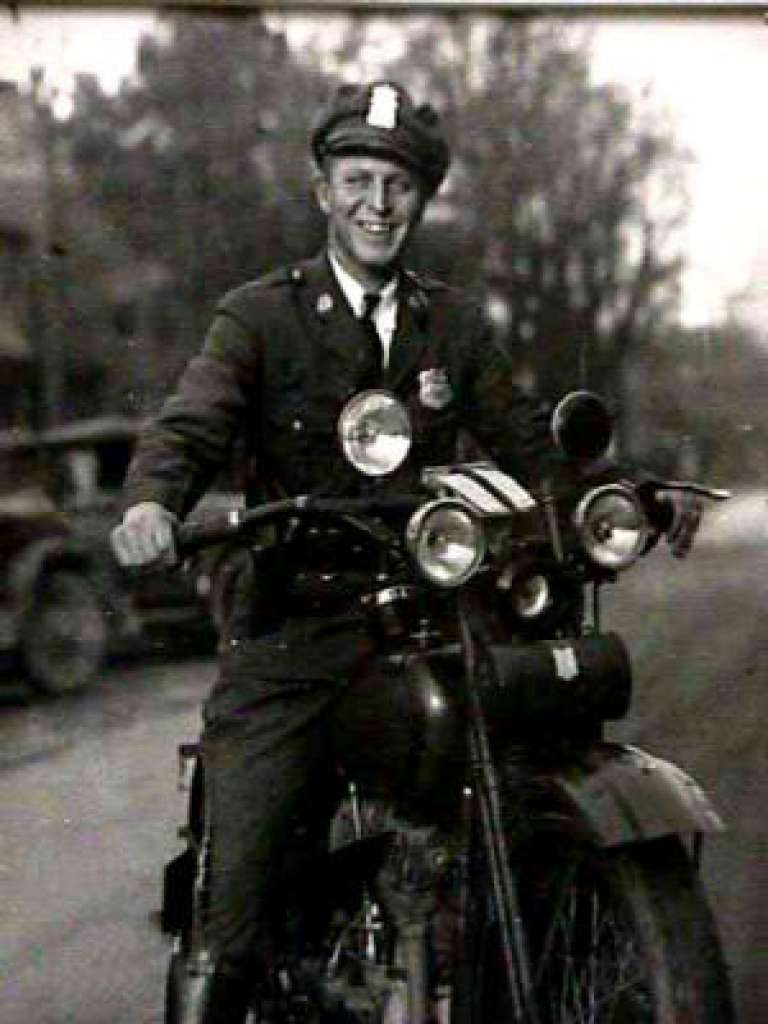

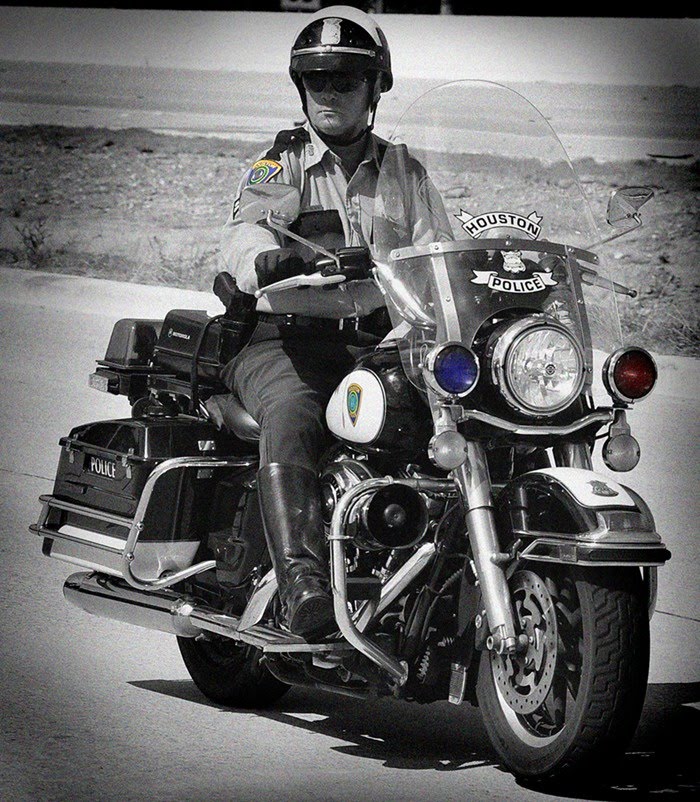
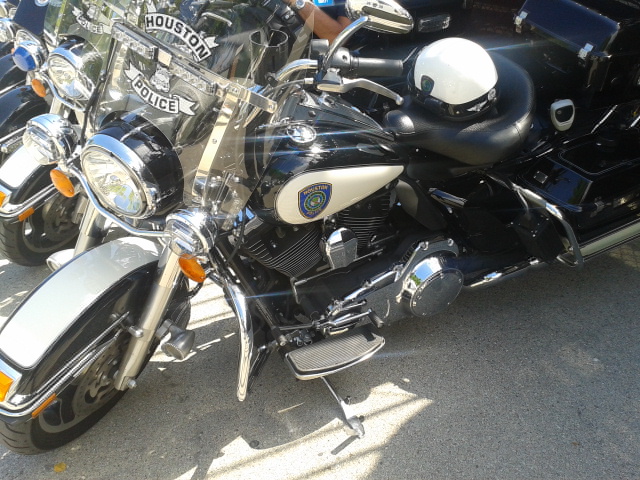
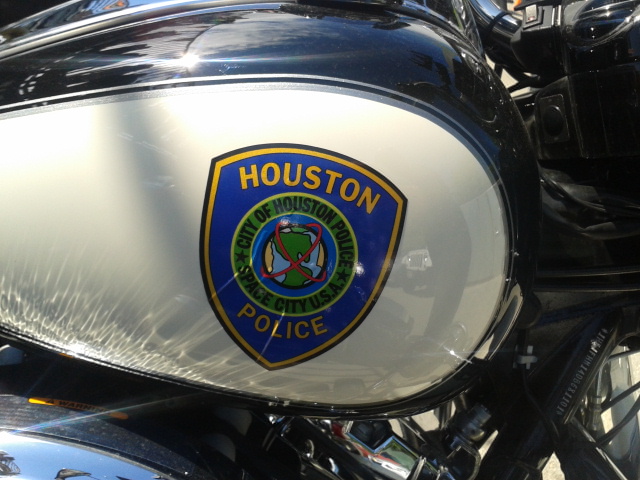
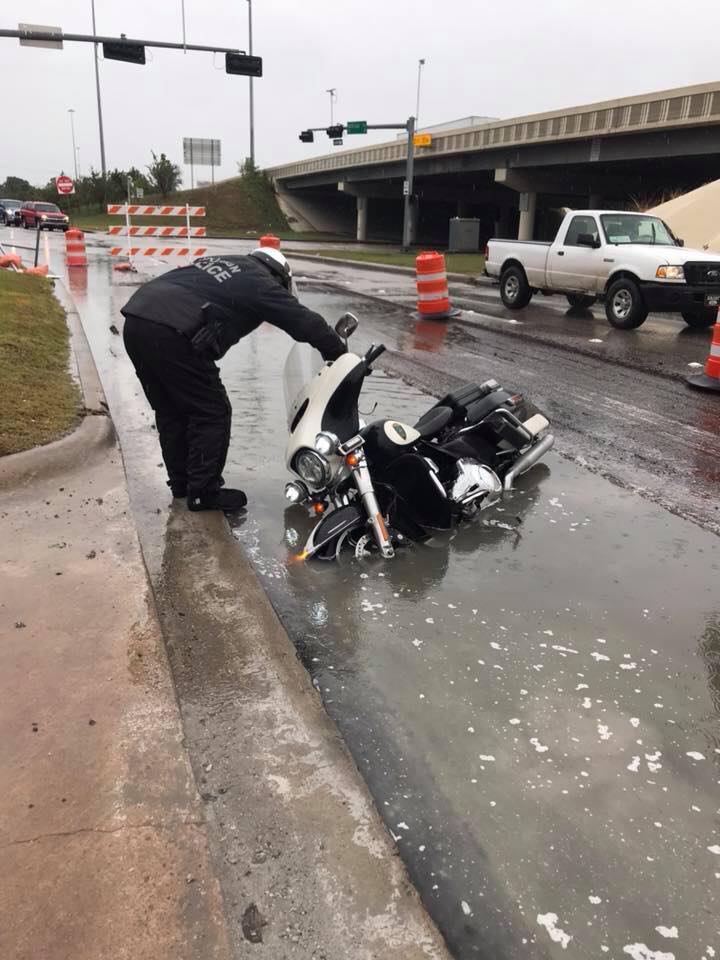
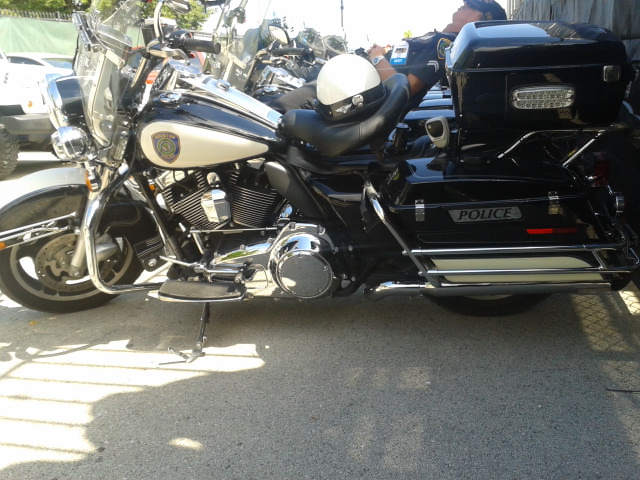
Information and Photos provided by the Houston, TX Police Department
